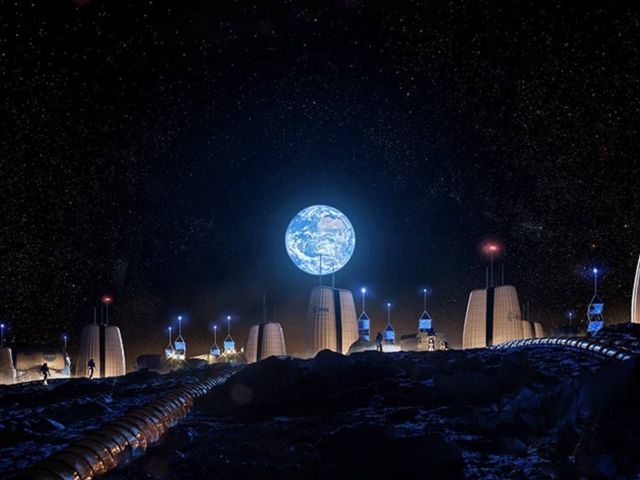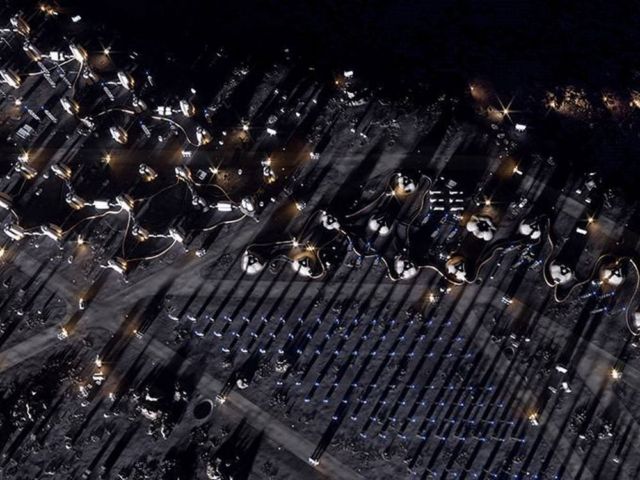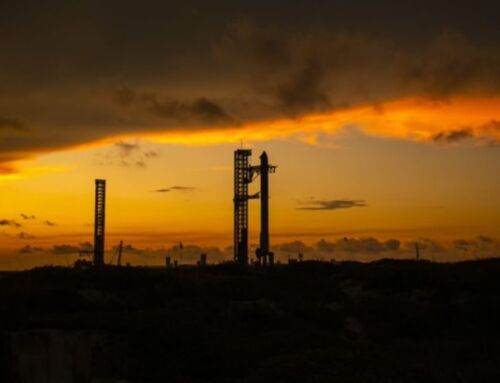SOM releases ‘Moon Village’ concept, the first permanent human settlement on the Lunar surface.
Skidmore Owings and Merrill (SOM) have unveiled their vision for the “Moon Village,” the first permanent human settlement on the Lunar surface, developed in collaboration with the European Space Agency (ESA) and the Massachusetts Institute of Technology (MIT).
From the press release:
Five decades after humans first set foot on the Moon, a new initiative is underway to bring us back—and this time, the aspiration is to settle there on a permanent basis. Today, Skidmore, Owings & Merrill LLP (SOM), in partnership with the European Space Agency (ESA) and the Massachusetts Institute of Technology (MIT), has released a design for the “Moon Village,” a concept presented by ESA Director General Jan Woerner for the first full-time human habitat on the lunar surface. With ESA and MIT, SOM is master planning, designing, and engineering the settlement.
“The project presents a completely new challenge for the field of architectural design,” said Design Partner Colin Koop. “The Moon Village must be able to sustain human life in an otherwise uninhabitable setting. We have to consider problems that no one would think about on Earth, like radiation protection, pressure differentials, and how to provide breathable air.”
Solving these challenges requires cross-disciplinary collaboration, and a completely new way of approaching the space industry’s most complicated problems. ESA is providing a diverse range of expertise from the European Astronaut Centre and the European Space Research and Technology Centre. This experience is coupled with faculty from MIT’s Aerospace Engineering Department and SOM’s extensive experience in architecture, engineering, urban planning, and sustainable design to bring a holistic approach to the project.
Resiliency and self-sufficiency are key. The master plan envisions the Moon Village on the rim of Shackleton Crater near the South Pole, which receives near continuous daylight throughout the lunar year. This planning is essential for the first of three envisioned development phases—several critical infrastructural components and habitable structures—that would allow the Village to harness sunlight for energy and set up in situ resource utilization (ISRU) experiments, or the generation of food and other life-sustaining elements using the Moon’s natural resources. Water from the permanently shadowed depressions near the South Pole would be extracted to create breathable air and rocket propellant for transportation and for the support of industrial activities. The settlement would be clustered close to the crater’s water-ice deposits. Additionally, each cluster of modules would be connected to enable seamless mobility between structures, with communications towers on the highest ridges of the uneven terrain.
The individual pressurized modules are designed to inflate and expand to increase user space for future growth and program requirements. The concept calls for three to four-story structures, with workspaces, living quarters, and environmental control and life support systems. These inflatable structures would provide—together with regolith-based protective shells—resistance to extreme temperatures, projectiles, regolith dust, and solar radiation. More importantly, these features would enable the Moon Village to carry out its much larger purpose as a scientific, industrial, and entertainment development, and an endeavor with far-reaching goals.
The Moon Village is an open, multi-partner concept that fits into ESA’s reflection on future exploration beyond 2050—complementary to projects already validated by ESA’s member states—and into the National Aeronautics and Space Administration’s Strategic Plan to “extend human presence deeper into space and to the Moon for sustainable longterm exploration and utilization.” It is an opportunity to explore the Moon in its entirety, to spur research and commercial growth, and to serve as a stepping stone to achieve even greater ambitions: extending the human footprint to Mars and beyond.
Images credit SOM
source SOM








Leave A Comment